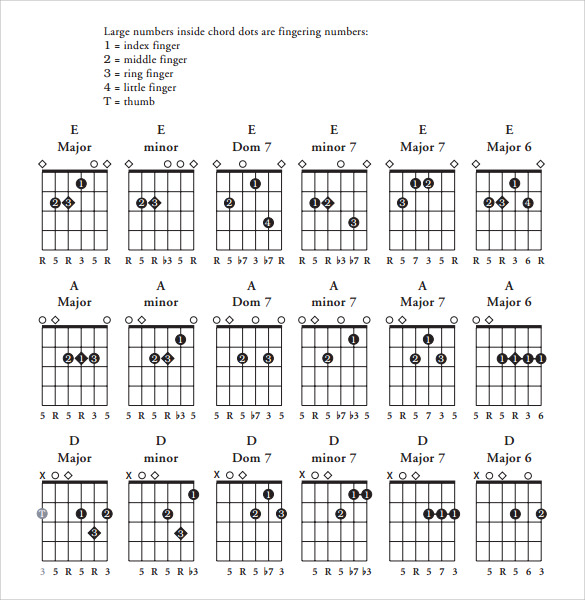
Your thumb acts like an anchor by helping to control your chord changes and keeping your fingers in the correct position. It makes it hard to grip and change between the chords easily.Īn added bonus to gripping your thumb around the neck is you can also mute the low E string with it on chords that don't use string 6 (A's, C's, D's, for example). Placing your thumb low down at the back of the neck when playing open chords is outdated advice. The first thing to try if your chord changes feel slow and messy is to adjust your thumb position. Lightly wrap your thumb around the guitar neck
#All chords for guitar how to#
Notes buzzing or muting on the chords? Follow these top tips to learn how to play chords cleanly, smooth, and fast. The A Minor Chord we covered would be written thusly: X02210.How to play guitar chords properly: Top 7 Tips
#All chords for guitar series#
Now, during the course of your guitar studies, you might also encounter chords written as a series of numbers, like this: X32010. Need more help playing chords? Learn How To Play Guitar Chords here. If you see a string with no dot, you'll play that string open, and if you see a dotted string (or just an x at the top of the chart over a string) you'll have to mute or not play that particular string. If you see a "2," you'll use your second finger (middle finger), etc. If you see a "1" you'll use your first finger (index finger) to press the string on the fret represented. The numbered black dots you see on the chord chart show you where you should press down and what finger you should use. The horizontal lines on your chart serve as your "strings," while the spaces between the horizontal lines serve as your "frets." Unless otherwise noted, chord charts are written in standard tuning, so from left to right, those lines will represent your strings when played open: E, A, D, G, B, and E.

Take a quick look at your guitar, and you'll notice that your chord diagrams represent the strings and frets on your guitar. When you look at a chord chart, you'll see 6 horizontal lines and 6 vertical lines.

There are hundreds of combinations, and on the guitar, the most common method for learning these combinations is through chord diagrams, which are also referred to as chord charts. Alternatively, if you strung "A," "C," and "E," together, you'd be playing an A Minor Chord. If you were to play the notes "C," "E," and "G" together, for instance, you would be playing a C Major Chord. The notes you group together will change the sound of a chord, obviously, and will also change the name of the chord you are playing. You can play them melodically, one note at a time, or harmonically, with all the notes sounding together, but they're chords all the same. A chord is any grouping of three or more notes. You probably already understand what a note is.
#All chords for guitar free#
Guitar Chord Progressions Guitar Chord Charts for Beginnersīefore diving into how you can play chords on your guitar, it might help if you understood what a chord is, no? Feel free to skip ahead if you already have a basic understanding of how chords are defined.


 0 kommentar(er)
0 kommentar(er)
